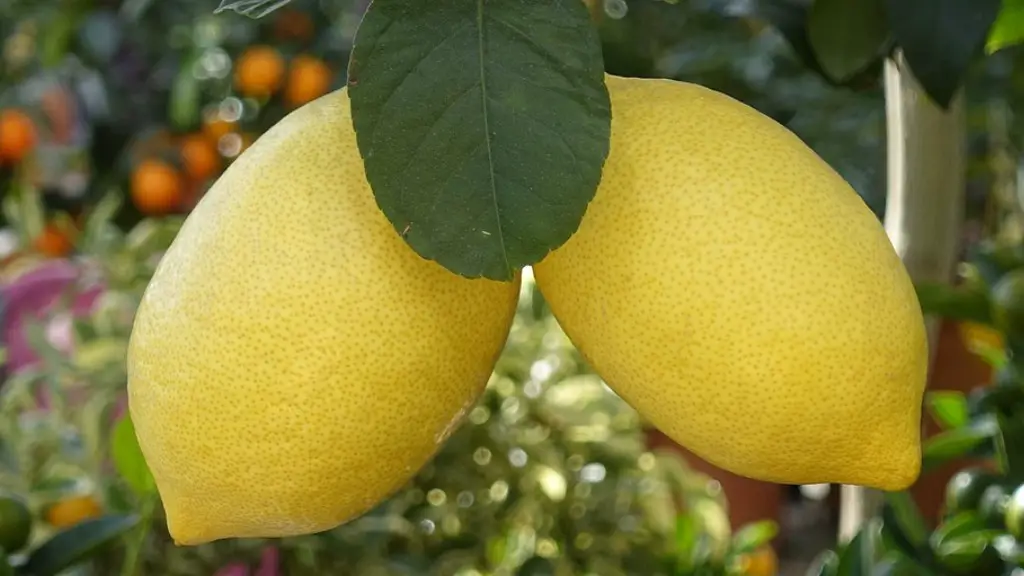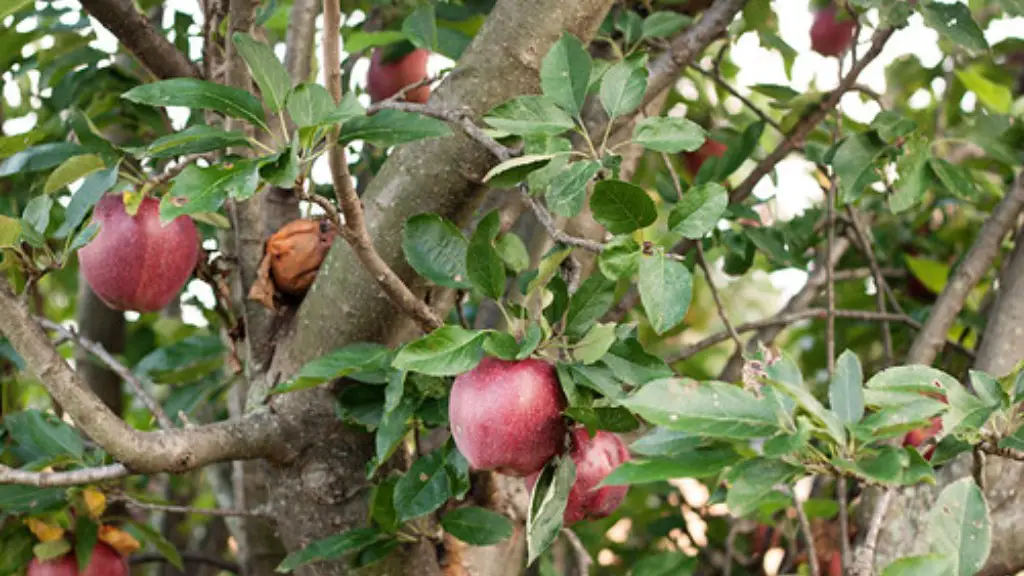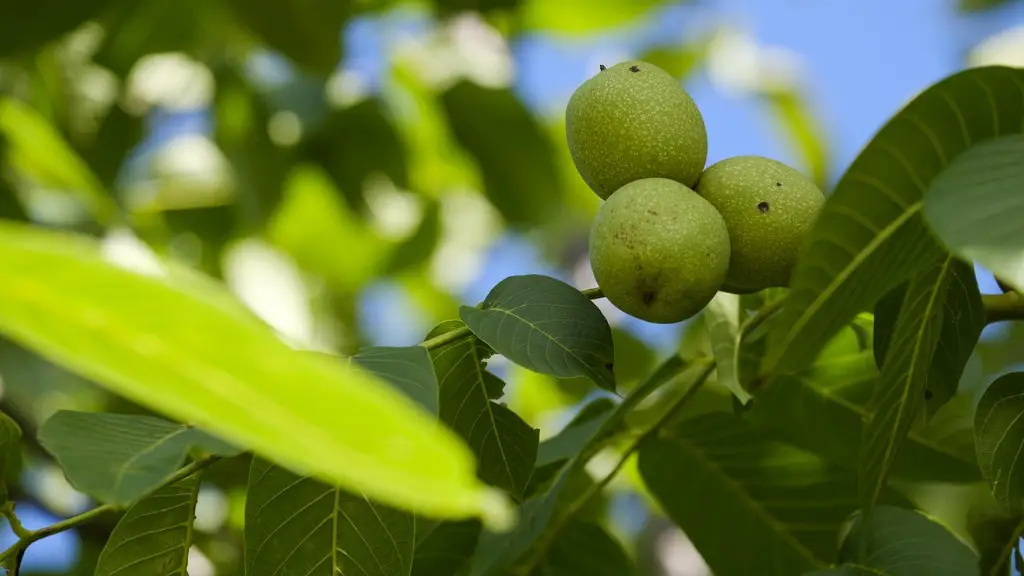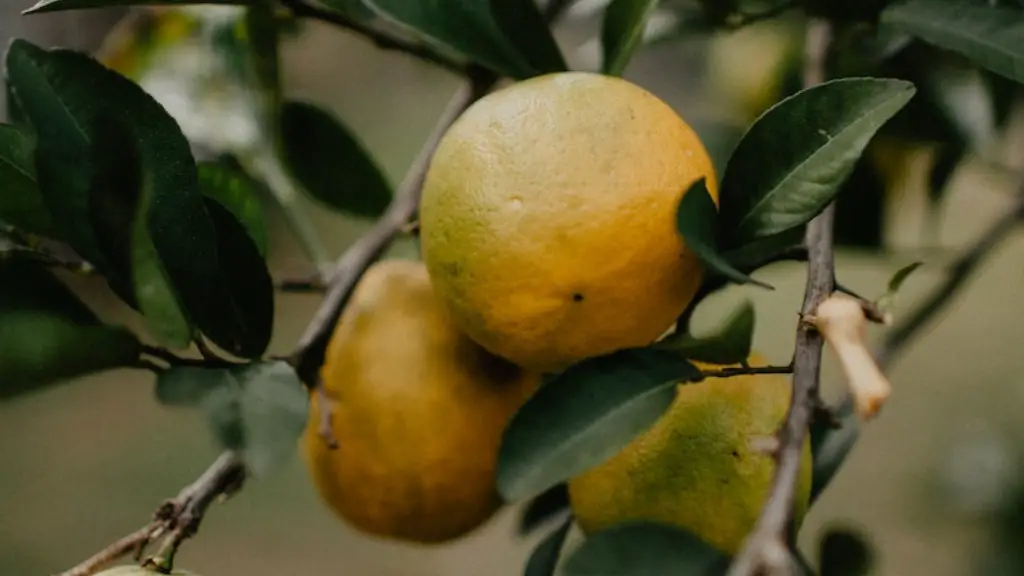Lemon trees can be grown in your home with a little bit of effort. You will need the right soil, container, drainage, and water to ensure your tree grows properly and produces high-quality lemons. Here is a step-by-step guide on how to grow a lemon tree from seed.
1. Obtain a lemon seed. Make sure it is a viable seed, as lemon tree seeds have a low germination rate. The best way to ensure a successful germination is to buy your seed from a reputable nursery.
2. Place the seed in a container filled with moist soil. Place the container in an area that has indirect sunlight and good air circulation. Water the soil regularly and keep the seed moist.
3. Monitor the progress of the seed. If the seed begins to sprout, carefully transplant it into a larger pot or the ground. Make sure there is plenty of drainage so the lemon tree receives enough oxygen.
4. Fertilize the lemon tree with a fertilizer high in nitrogen and potassium. This will help the tree to grow stronger and produce larger and juicier lemons. Also, make sure the soil pH is between 5.5 and 7.5.
5. Prune the tree to keep it manageable. Pruning the lemon tree will help it maintain its shape, keep it healthy, and promote new growth. Be sure to water the tree regularly and gently remove any dead branches.
6. Protect the lemon tree from pests and diseases. Check the tree regularly to look for any signs of pests or diseases. If you spot any, treat the tree immediately with an appropriate pesticide or fungicide.
7. Harvest your lemons when they are ripe. This often occurs in late spring or early summer, depending on the variety of tree and climate. Lemons that are picked from the tree will be much sweeter and juicer than those you will find in the supermarket.
Soil
Growing a lemon tree in your home starts with the soil. It needs to be near neutral, with a pH of about 7. It should also have excellent drainage and plenty of organic matter to help the tree absorb nutrients. A combination of potting soil, sphagnum moss, and compost can achieve this, as well as provide a nutrient-rich environment for your tree.
Ideally, you should use a soil mixture specific to citrus plants, which are known to be more sensitive to certain minerals, like magnesium and calcium. It is also best to avoid any soil containing manganese and iron, as these can make the soil too acidic and hinder the tree’s growth.
To ensure proper drainage, you can add perlite or other aggregates to your soil mix. And, if your soil is particularly sandy, consider adding some aeration via layers of mulch or compost.
Finally, do not forget to water the soil regularly, as a lemon tree without adequate moisture will not yield any fruit.
Container
The size and quality of your container will be a major factor in how well your lemon tree grows. If the container is too small, it will not allow the root system enough room to grow and will become root-bound. A good container for a lemon tree should be at least 18 inches wide and 24 inches deep.
Ideally, use one made from terracotta, which is breathable and allows for more water retention and air circulation. You can also opt for a plastic container, but make sure it has good drainage holes and comes with a set of saucers. Whatever you decide, make sure the container has adequate drainage, as too much water can easily drown the tree’s roots.
If you are growing multiple trees, keep them at least 6 feet apart. This will give them enough space to prevent root competition and harmful fungal issues.
Drainage
Poor drainage can cause root rot, nutrient deficiencies, and even disease on your lemon tree. To avoid this, make sure your container has drainage holes and sits on a saucer or other drainage system. You should also consider adding a layer of gravel to the bottom of the container, as this will help excess water seep away from the roots, promoting better aeration and overall health of the tree.
When watering, only do so until the soil feels moist to the touch and never let the water stand for more than a few minutes. Also, consider using an absorbent mulch around the tree to help keep the soil cool, conserve moisture, and reduce weed growth.
Watering
Watering is another crucial part of growing a lemon tree, as too much or too little water can both cause problems. When it comes to growing a lemon tree, proper and regular watering is essential. The trees like plenty of moisture but don’t like to have their roots sitting in water, so it’s important to create a weekly watering schedule.
If the soil is dry more than two inches deep, it’s likely time for a drink. As a general rule, a lemon tree should receive about one gallon of water per week. If your tree is planted in the ground, aim to give it a deep and thorough drink twice a week. If it is growing in a container, however, it might need to be watered quite a bit more. Always be sure to check the soil around the roots and water as needed.
When it comes to watering, it is also important to use only non-chlorinated water. Chlorinated water can kill beneficial bacteria in the soil, stunt root growth, and weaken the plant overall. If you only have access to chlorinated water, fill up a bucket, leave it out to sit for 24-48 hours, and then use it on your lemon tree.
Fertilizing
Fertilizing is an important part of growing a healthy lemon tree. To do this properly, you need to feed your tree with a balanced fertilizer high in nitrogen, potassium, and phosphorus. If you want to give your tree the best, use an organic fertilizer that is specifically made for citrus trees. These provide a more balanced and slow-release nutrient supply.
You should also be mindful of the frequency of your fertilizing. A lemon tree typically only needs to be fertilized every two months or so, as too much fertilizer can easily damage the tree. Also, try to avoid fertilizing while it is fruiting, as this can burn the tree or inhibit growth.
Pest and Disease Control
Unfortunately, pests and diseases can be a fact of life when growing lemon trees. The best way to keep these problems at bay is by regularly inspecting your tree for signs of pests or disease and taking preventative measures, such as removing pests by hand, using organic pesticides, or treating with fungicides. It is also important to make sure your tree is getting the proper soil, sunlight, water, and nutrients to help it stay healthy and strong.
One of the most common lemon tree pests is the mealybug, which can easily be eradicated by using an organic pesticide. Other common problems include spider mites, citrus rust mite, thrips, scales, aphids, and white flies. Each of these can be managed with the appropriate pesticides, fungicides, or insecticides.
When it comes to diseases, the most common problem is the citrus canker. This can be treated with a fungicide designed specifically for citrus canker. Other common diseases to watch out for include gummosis and black spot mold. Both can be treated with fungicides, as well as through proper garden and cultivation practices.




